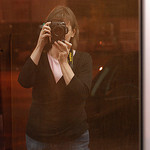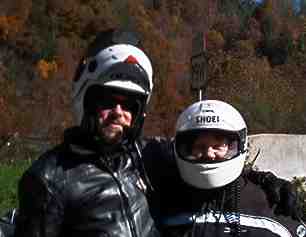Saw a link to this article (in The Times Online) somewhere today, whilst re-acquainting myself with the Net after 5 days in a cabin:
Japan is proud home of Christ's tomb
In a paddy-lined valley in the far north of Japan is a municipal signpost inscribed: “Tomb of Christ: next left.”
Follow the winding path up into the forest and there, sure enough, is a simple mound with a large wooden cross labelled as the grave of Jesus. Nearby is a tomb commemorating Isukiri, Christ’s brother, adorned with a plastic poinsettia Christmas wreath.
For two millennia the farming village of Shingo claims to have protected a tradition that Jesus spent most of his life in Japan. The village is the home of Sajiro Sawaguchi, a man in his eighties who claims to be a direct descendant of Jesus and whose family has always owned the land in which it is said that Christ is buried.
Mr. Sawaguchi emerged as Jesus’s heir only in 1935, ...
Pre-Priory of Sion even...
...when a priest in Ibaraki discovered a document in ancient Japanese purporting to be Christ’s will. This document supposedly identifies Shingo as the location of the tombs of Jesus and Isukiri. The claim is widely believed. About 40,000 Japanese visit the site every year. Two years ago it was presented with a plaque by Jerusalem, and next Sunday it will host the annual Christ festival of traditional Japanese dance.
According to the account in the Christ Museum next to the tombs, Christ arrived in Japan at the age of 21 and learnt Japanese...
Proof of His divinity... Japanese is difficult
...before returning to Judaea 12 years later to engage in his mission and preach about the “holy land of Japan.” The official Shingo history is that Jesus’s place on the Cross was “casually” taken by his brother, leaving Christ free to return to Japan. On his return he fell in love with Miyuko, a local girl, and lived happily with his family among the rice fields until dying aged 106.
Gota wonder when we'll find this "Lost Gospel." It might explain how His brother's body got back to Japan for burial after crucifixion in Judea.
Norihide Nagano, the straight-faced curator of the tombs, says that the theory that the grave does contain the remains of Jesus is supported by several pieces of evidence. There is the local tradition, dating back hundreds of years, of drawing a charcoal cross on babies’ heads; and ancient kimonos made in the area incorporated a Star of David.
Also, Japanese eat lost of fish--including on Fridays.
The upkeep of the site is paid for out of the profits of a local yoghurt factory, and Mr. Nagano agrees that The Da Vinci Code will probably boost Shingo’s coffers. The village shop is already doing a roaring trade in Christ-branded saké. “Did you enjoy the museum?” asks Mr Nagano. “If you did, I recommend you go to Ishikawa district. They have the tomb of Moses there.”
Just what was it that PT Barnum said?





No comments:
Post a Comment